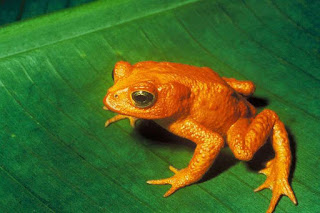Explorer 1, the U.S's first satellite, was launched on January 31, 1958, in response to the Soviets Sputnik 1 and 2, launched the year before. It detected the Van Allen radiation belts and continued transmitting for four months, althought its high powered transmitter lasted a month. Explorer 1 remained in orbit for another 12 years before burning up in the atmosphere in 1970.
Ham the Astrochimp blasted off January 31, 1961 in a Mercury Redstone rocket to see if man was ready for space travel. Ham performed a series of tests during his 16.5 minute flight. He traveled 157 miles before splashing down in the Atlantic Ocean, suffering only a bruised nose. Ham died in 1983. After a successful mission, NASA deemed it safe for Alan Shepard to be the first American in space.
Apollo 14 crew: Stuart Roosa, Alan Shepard, and Edgar Mitchell
And speaking of Alan B. Shepard, he commanded Apollo 14, the third (successful) manned mission to the moon. His crew consisted of Command Module Pilot Stuart Roosa and Lunar Module Pilot Edgar Mitchell. They launched January 31, 1971 and landed on the Fra Mauro formation (the original landing site of Apollo 13) February 5. Shepard hit two golf balls on the moon's surface using a makeshift club. He claimed the balls went 'miles and miles and miles' but the distance was estimated to be 200-400 yards. How long is a par 5? After Shepard and Mitchell spend 33 1/2 hours on the moon, they took off and the crew returned to Earth February 9.






































